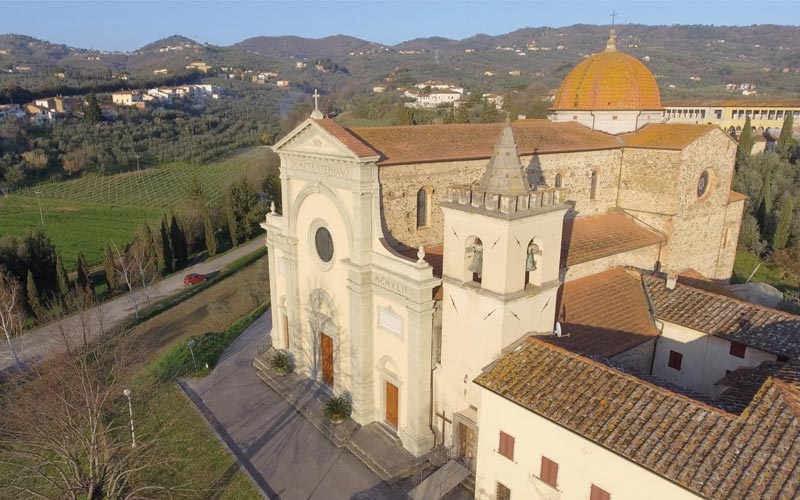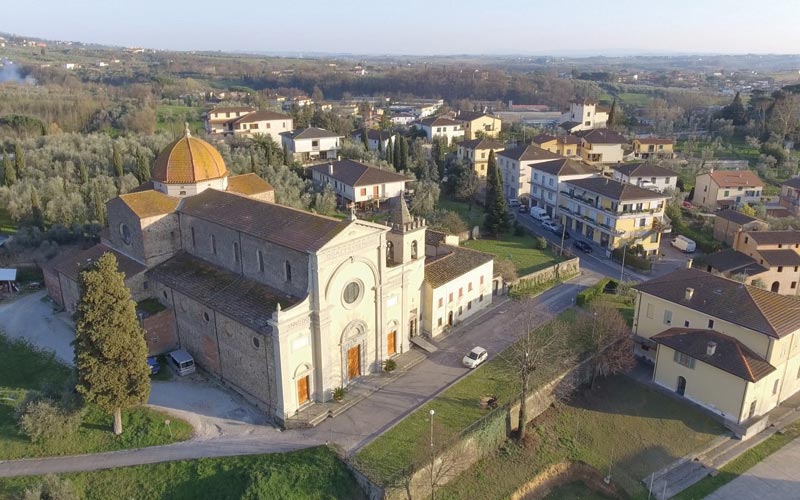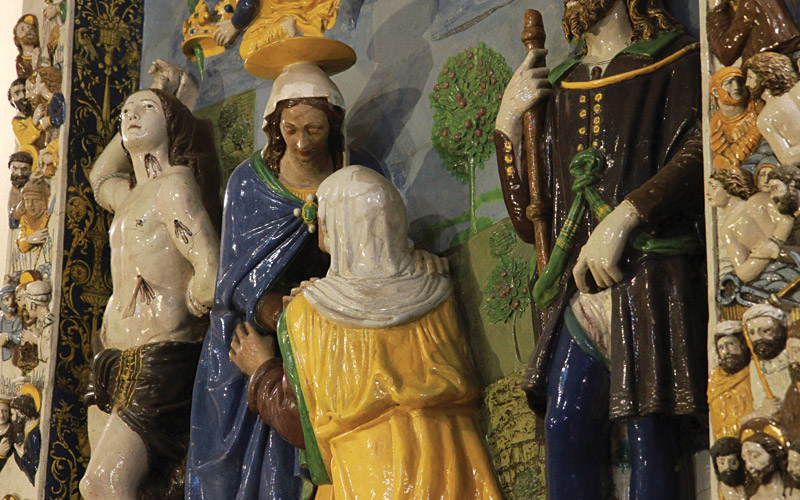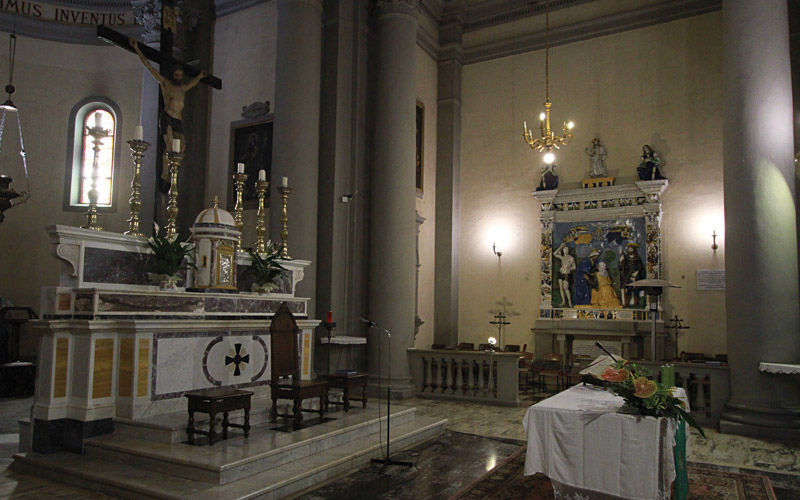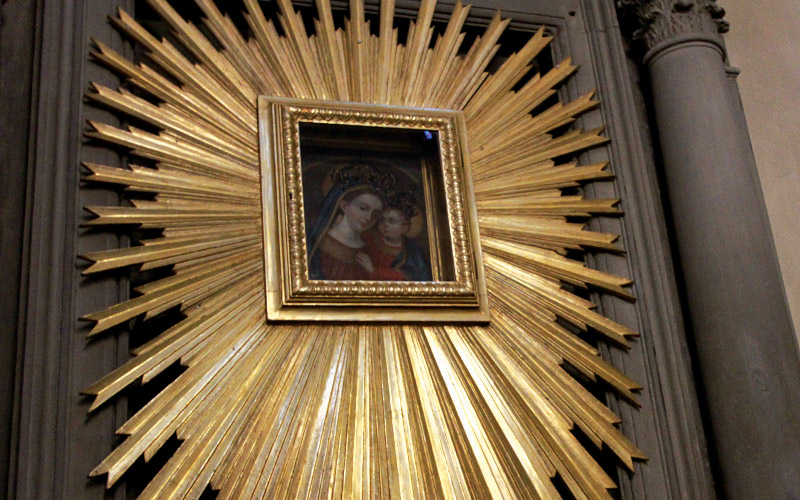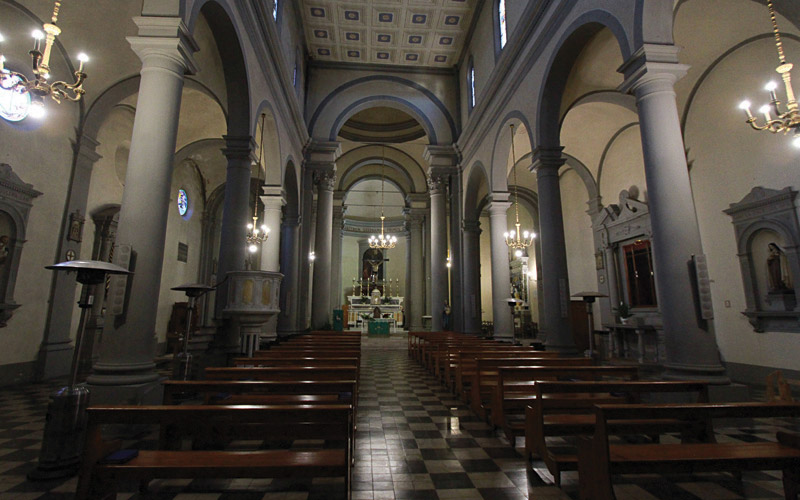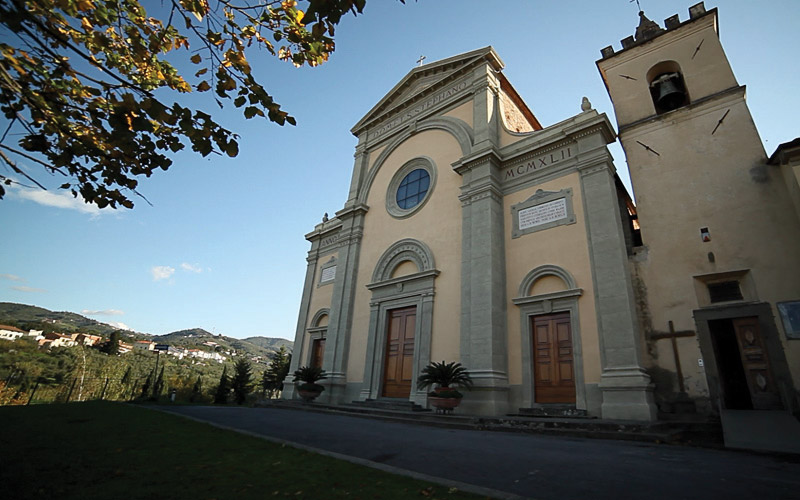
Church of Santo Stefano
It was dedicated to Lamporecchio’s patron saint and built on a hill which overlooks the village. The present building was built in the Florentine Renaissance style between 1900 and 1921 on a preexisting church of 1300.
In the church there are various works of art which deserve attention. The most important is undoubtedly the altar-piece picturing the Visitation of the Madonna to Saint Elizabeth, surrounded by Saint Sebastian and Saint Rocco. The altar-piece, of glazed polychrome earthenware, is attributed to Giovanni della Robbia and was wanted by the citizens of Lamporecchio between 1524 and 1525 to thank the Madonna for having escaped the plague epidemic.
Another work of art attracts the visitor who enters the church: a beautiful 17th century wooden Crucifix which was restored in 1935 and donated by the Rospigliosi family; it is situated on the second altar of the right aisle. In this wooden sculpture the portrayed Christ stands out on a background of red damask silk and shows his pain and his suffering in the moment of death.
At the top of the right aisle we see an oil on canvas portraying a Glory of Angels. The canvas with its muted and dull colours is traditionally attributed to the Cignani school (1628-1719). Other works of art enrich the rest of the church: at the top of the left aisle you can see the original church’s altar and above it there is a Madonna with Child and Saints, an oil on canvas by an unknown painter, attributed to artists belonging to the Tuscan school of the first half of the eighteenth century. At the bottom of the apse, in a central position, we find an arched oil painting that portrays Christ on the cross with Saint Jacopo, Saint Girolamo, Saint Francis and Saint Anthony the Abbot at his feet. The painting by an unknown artist probably dates back to the end of the sixteenth century or to the beginning of the seventeenth century.
Above the door that leads to the sacresty, there is an oil on canvas portraying the Madonna with Child in the act of holding out the beads to Saint Dominic and Saint Catherine of Siena, portrayed with white clothes and black mantles. Also this painting is by an unknown painter, most likely Tuscan, and it is chronologically placeable between the second half of the seventeenth century and the beginning of the following one.
The baptismal font in a frescoed recess is remarkable while on the outside you can admire the tower bell, preserved in its ancient structures.
Information
- Via Vitoni, 103 – 51035 Lamporecchio (PT)
- Free entrance
Mass Hours
- 18.00 (May-September);18.00 (October-April);
- 18.00
- 8.00

